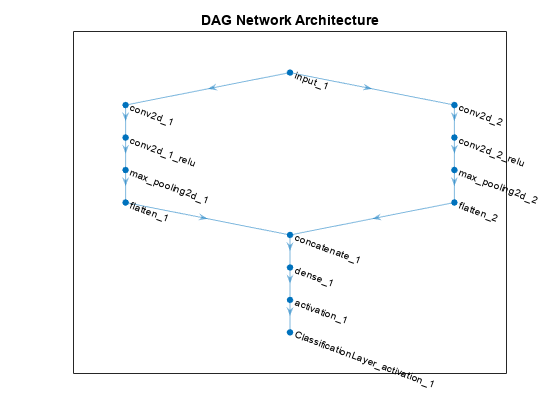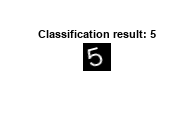importKerasNetwork
(To be removed) Import pretrained Keras network and weights
importKerasNetwork will be removed in a future release. Use importNetworkFromTensorFlow instead. (since R2023b) For more information about
updating your code, see Version History.
Description
net = importKerasNetwork(modelfile,Name,Value)
For example, importKerasNetwork(modelfile,'WeightFile',weights)
imports the network from the model file modelfile and weights from the
weight file weights. In this case, modelfile can be in
HDF5 or JSON format, and the weight file must be in HDF5 format.
Examples
Input Arguments
Name-Value Arguments
Output Arguments
Limitations
importKerasNetworksupports TensorFlow-Keras versions as follows:The function fully supports TensorFlow-Keras versions up to 2.2.4.
The function offers limited support for TensorFlow-Keras versions 2.2.5 to 2.4.0.
More About
Tips
If the network contains a layer that Deep Learning Toolbox Converter for TensorFlow Models does not support (see Supported Keras Layers), then
importKerasNetworkreturns an error message. In this case, you can still useimportKerasLayersto import the network architecture and weights.You can import a Keras network with multiple inputs and multiple outputs (MIMO). Use
importKerasNetworkif the network includes input size information for the inputs and loss information for the outputs. Otherwise, useimportKerasLayers. TheimportKerasLayersfunction inserts placeholder layers for the inputs and outputs. After importing, you can find and replace the placeholder layers by usingfindPlaceholderLayersandreplaceLayer, respectively. To learn about a deep learning network with multiple inputs and multiple outputs, see Multiple-Input and Multiple-Output Networks.To use a pretrained network for prediction or transfer learning on new images, you must preprocess your images in the same way as the images that you use to train the imported model. The most common preprocessing steps are resizing images, subtracting image average values, and converting the images from BGR format to RGB format.
For more information about preprocessing images for training and prediction, see Preprocess Images for Deep Learning.
MATLAB uses one-based indexing, whereas Python® uses zero-based indexing. In other words, the first element in an array has an index of 1 and 0 in MATLAB and Python, respectively. For more information about MATLAB indexing, see Array Indexing. In MATLAB, to use an array of indices (
ind) created in Python, convert the array toind+1.For more tips, see Tips on Importing Models from TensorFlow, PyTorch, and ONNX.
Alternative Functionality
Use
importKerasNetworkorimportKerasLayersto import a TensorFlow-Keras network in HDF5 or JSON format. If the TensorFlow network is in the saved model format, useimportTensorFlowNetworkorimportTensorFlowLayers.If you import a custom TensorFlow-Keras layer or if the software cannot convert a TensorFlow-Keras layer into an equivalent built-in MATLAB layer, you can use
importTensorFlowNetworkorimportTensorFlowLayers, which try to generate a custom layer. For example,importTensorFlowNetworkandimportTensorFlowLayersgenerate a custom layer when you import a TensorFlow-KerasLambdalayer.
References
[1] Keras: The Python Deep Learning library. https://keras.io.

